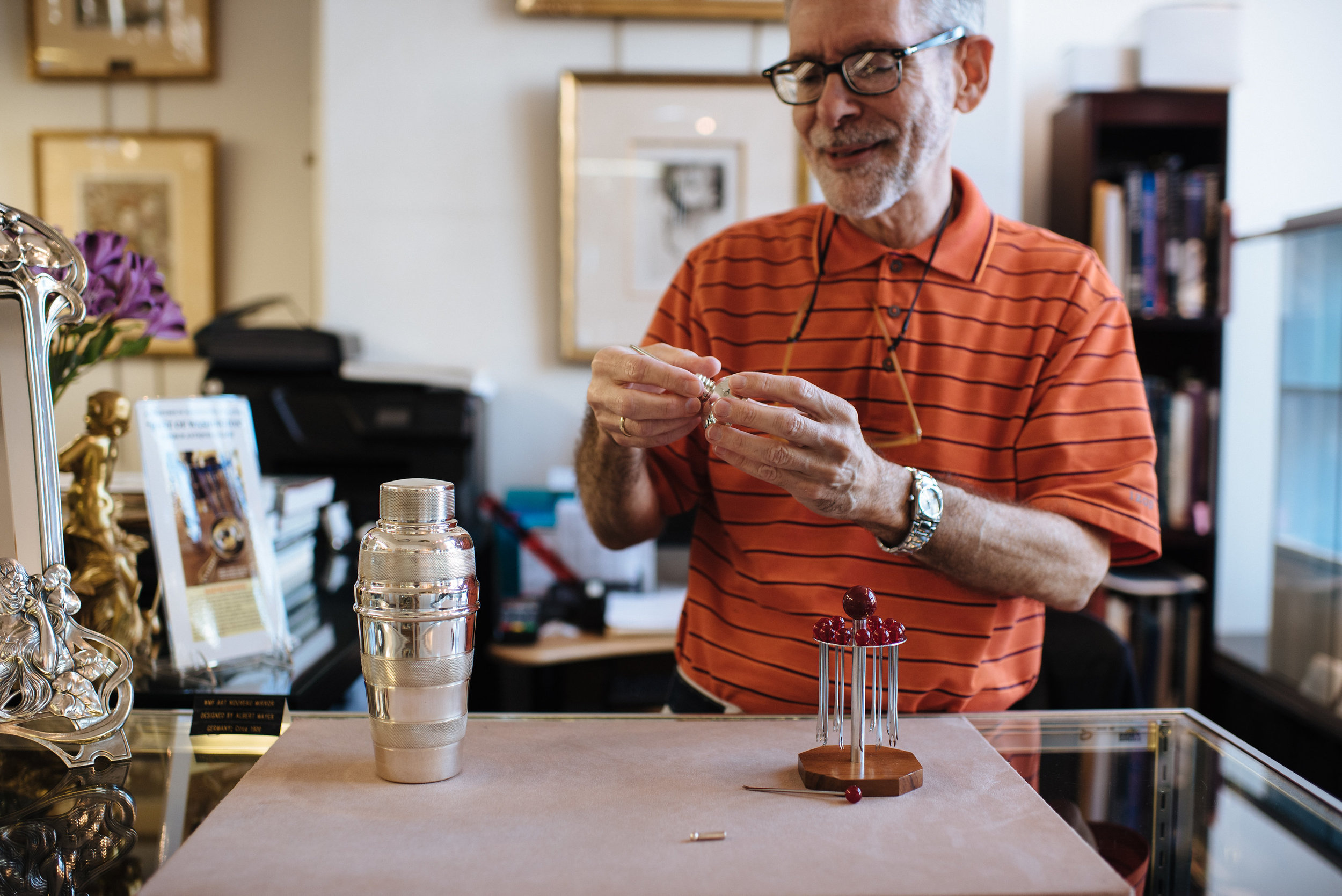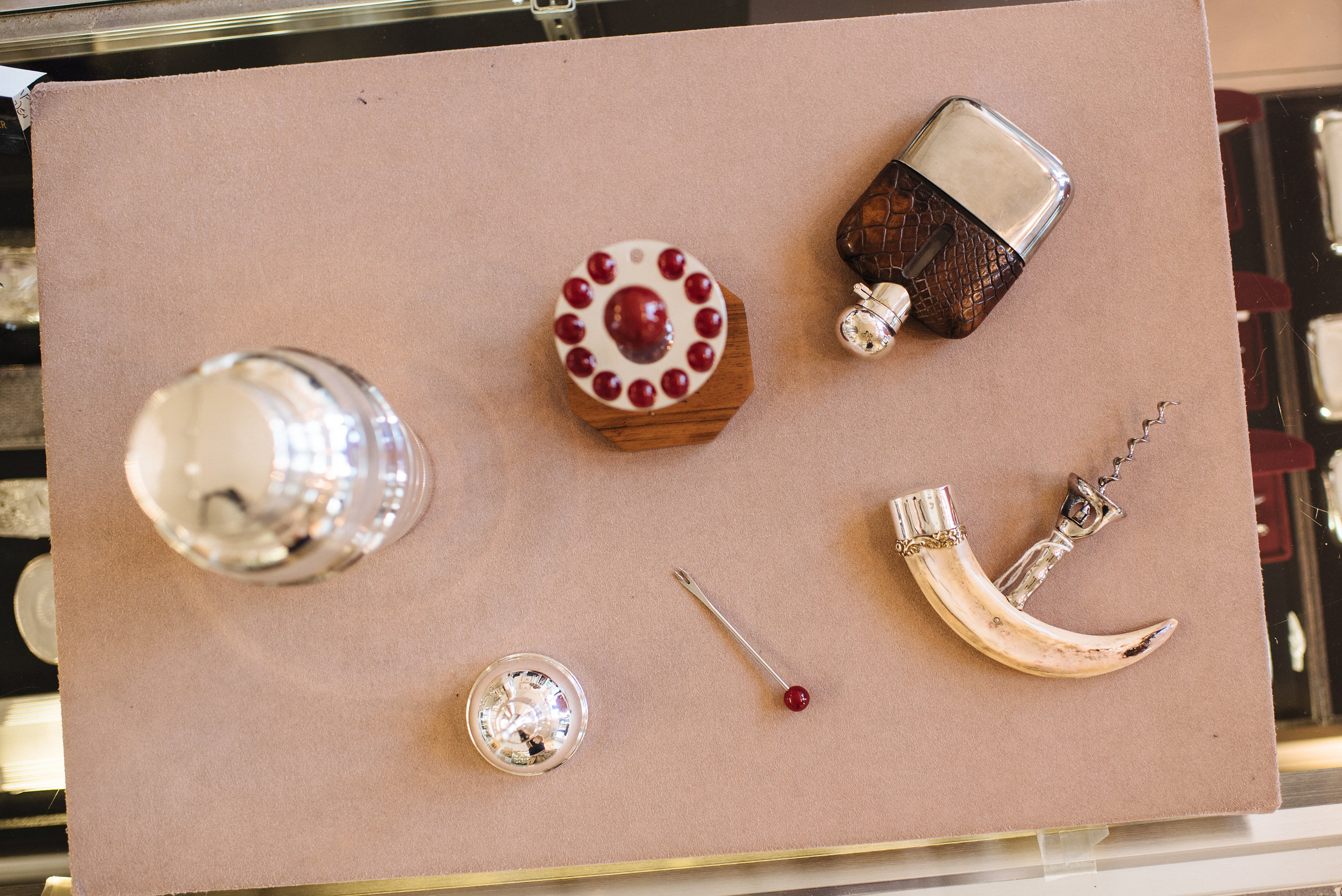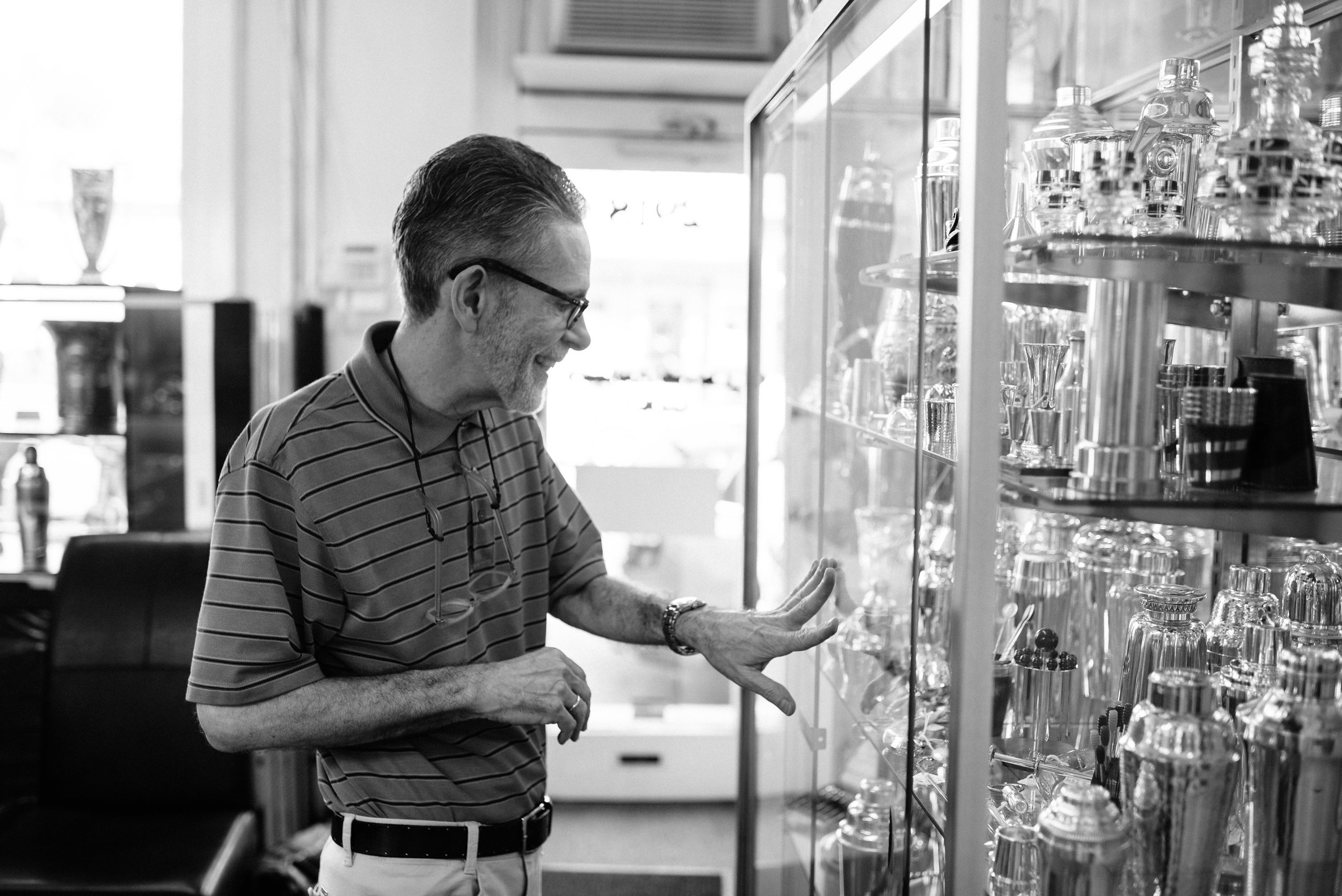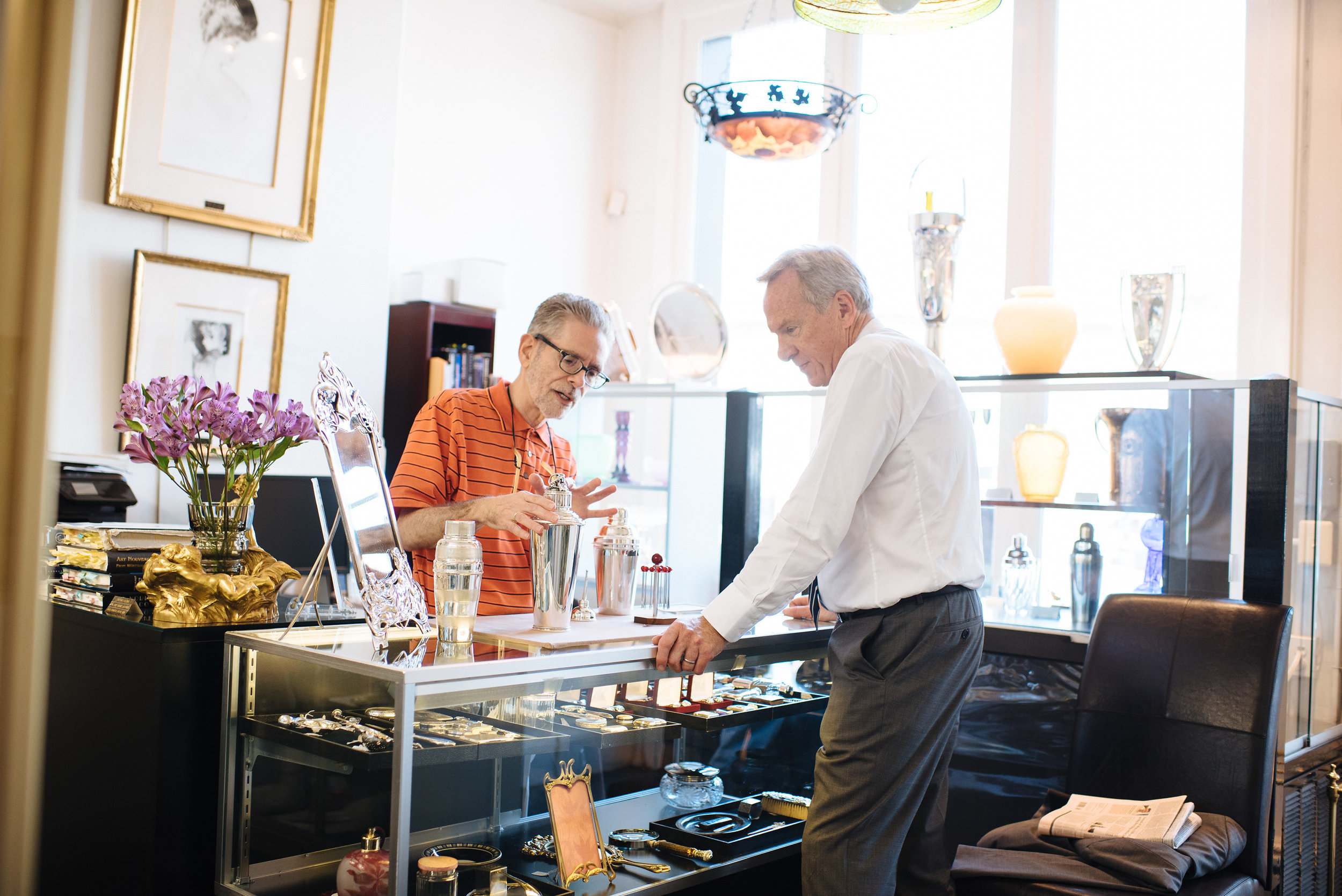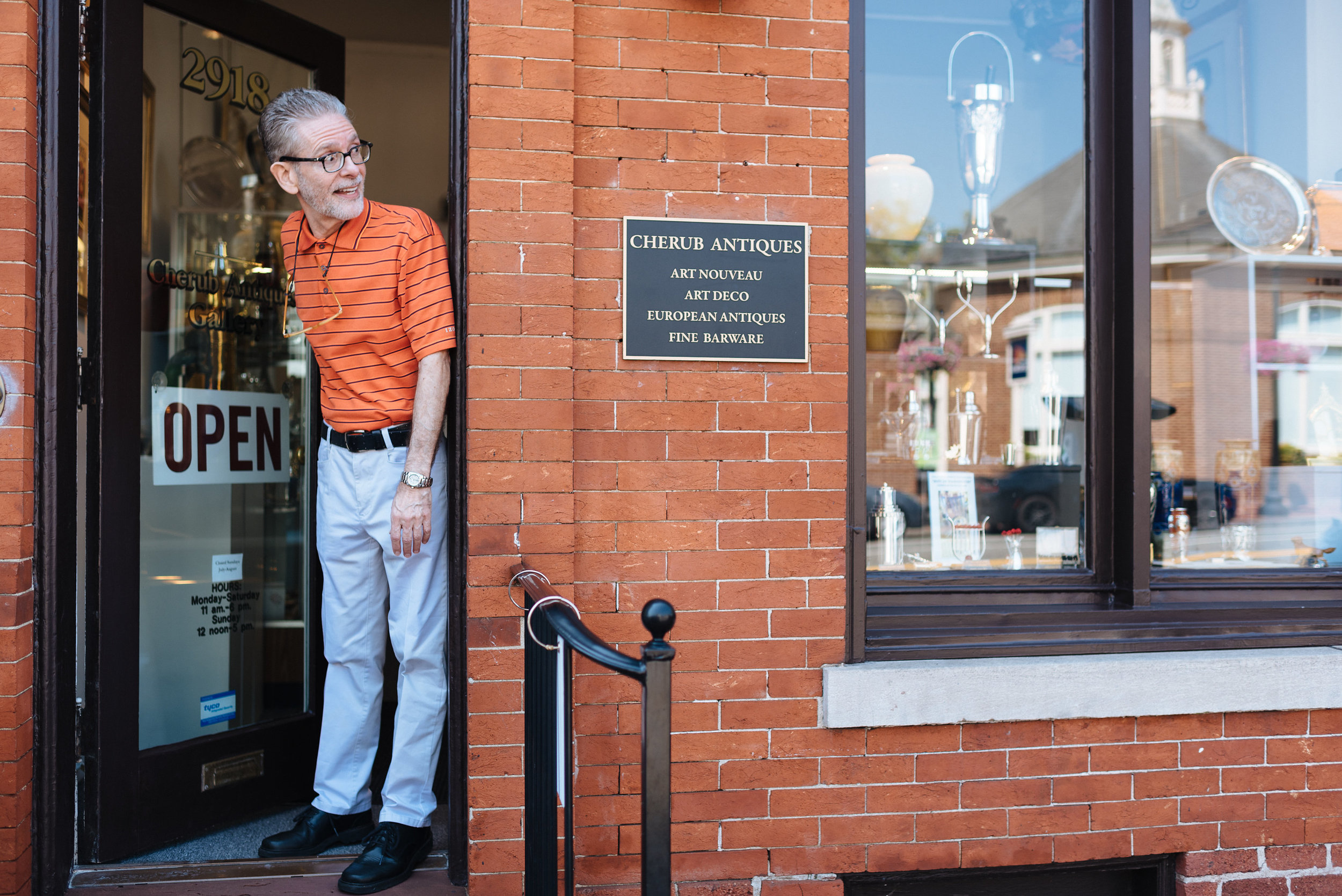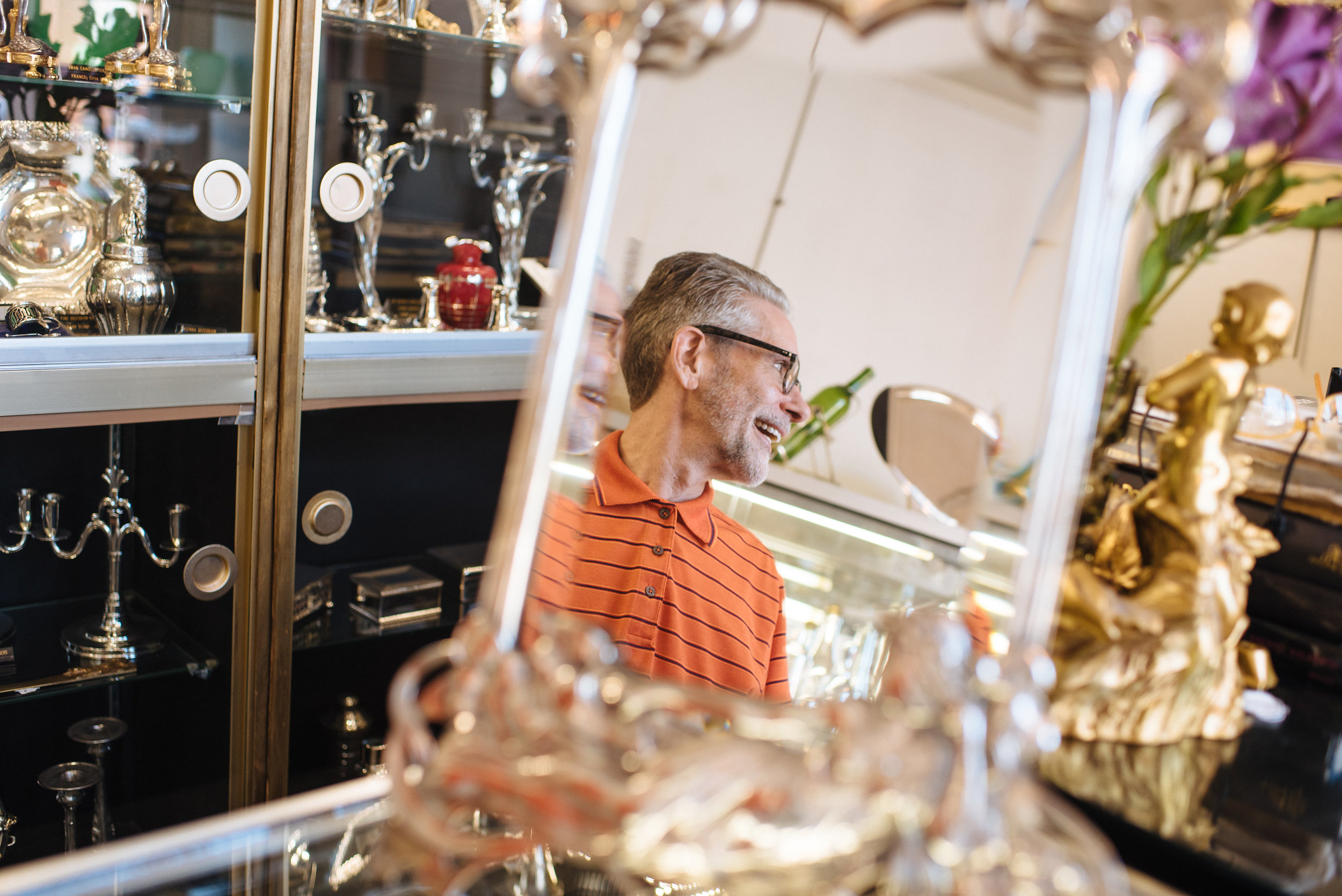‘I’m Like the Brief Caretaker’
Bruce Marine is in the business of finding things he loves, and then letting them go.
He still misses the hand-carved, wooden ship that sat on his shelf for the briefest of time. It had six sterling-silver cocktail picks with enameled flags representing different countries, and a silver smoke stack in the center that held a set of dice. He’d never seen anything like it.
‘It was from Germany in the 1930s, and I was so enthralled with it,’ says the owner of Cherub Antiques—the store Bruce has owned on M Street since the mid-eighties. ‘Someone bought just a few days later, and I had it so briefly that I do miss it! I wanted it on the shelf for a few weeks so I could just look at it.’
If he let himself, Bruce would spend all day admiring his finds. His interest began as an amateur collector, picking up pieces he loved at flea markets—always aiming to buy better merchandise and reinvest. When he found himself doing antique shows, Bruce opened a store in Old Town Alexandria.
‘I had a bargain rent but no one was coming in. Two and a half years later, I was invited to share a shop on Wisconsin Avenue. The first week, my best item—a Swiss silver antique box—was sold. I’ll never forget it. I knew right away that an antique store in Georgetown was a positive thing.’
Today, Bruce is down the street, still doing what he loves. He specializes in nouveau and art deco pieces, including an impressive and varied collection of cocktail shakers and bar ware.
‘I was only briefly a general line antiques dealer,’ he says. ‘More and more, collectors were asking about the other stuff. Your collectors tell you where you should go, and that’s what brought me here.’
Technically, the art deco pieces of the 1920s and 1930s aren’t quite antiques. It takes a century to earn that title. But they’re close enough, and influenced everything else in that era, Bruce says—from the fashion to the flappers, the architecture, and the dishes people ate off of.
Most of Bruce’s antiques hail from Europe, where he travels bi-annually to scout for new (old) inventory. In between trips, he has pickers throughout the world who are trained by his quality and condition standards—always staying away from replacement parts and damaged glass, in particular. Bruce says he enjoys the trips, but the process has changed since the advent of the Internet.
‘I used to go more and more into the little villages but it’s become tougher. One time I was up at 5 in the morning to visit a little village an hour outside of Belgium. I went into a shop and I was looking at this piece and telling the owner that the price seemed a little high, and his response was, ‘Well, on eBay..’ Because of the Internet, it doesn’t matter if you’re a little village out in the boondocks, or a big city like London—it’s all at your fingertips now. Everything is an educated decision, and the clients are more well educated.’
For all its challenges, technology has also boosted Bruce’s business—a website, in particular, helping him tremendously with repeat customers, near and far.
‘I have wonderful local clients in Washington, but the bulk are really national and international. They find me online, and I see them if they’re here on a business trip. If I had to start from square one today, I don’t think I could do it.’
Many of Bruce’s regulars are corporate CEOs and politicians—people he says deal with a unique set of stresses every day and turn to antiques to take their mind off of work. One of his favorites is a former governor with a well-known collection of figural cocktail shakers from the Prohibition era.
‘Forget that he was a darn governor; we relate on the antiques level. He just plops himself down on the chair and we shoot the breeze, and it’s wonderful. Another guy of Scandinavian descent will visit the shop, then go back to his hotel room and write me a thank you note. Who does that? My clients are some of the most extraordinary people I’ve ever met. They’re lovely and sincere, and they support my business.’
Antiques are, by definition, old. And yet, Bruce also welcomes his fair share of young customers—many of whom make it clear they can’t afford anything in the store but are still interested in antiques.
‘If they’re interested, that’s all that’s necessary. I take time to really teach them about the stuff, they become energized, and it’s exciting for me. And the funny thing is, four or eight years later, they come back in and say thank you, I’d like to buy something now.’
Bruce would occasionally like to buy something, too, but for the most part, he says he’s satisfied acting as the brief caretaker for an item before finding it a permanent home.
‘I’m getting the experience of buying an item and researching it for a few days; I don’t need to keep it,’ says Bruce, who owns a large private collection of African-American artwork with his husband. ‘When I place the pieces, it’s such a rewarding, complete experience for me.’
He still feels that way after more than three decades in Georgetown, the owner of the oldest neighborhood shop of its kind.
In 66 years, Bruce can finally call himself a Georgetown antique.
